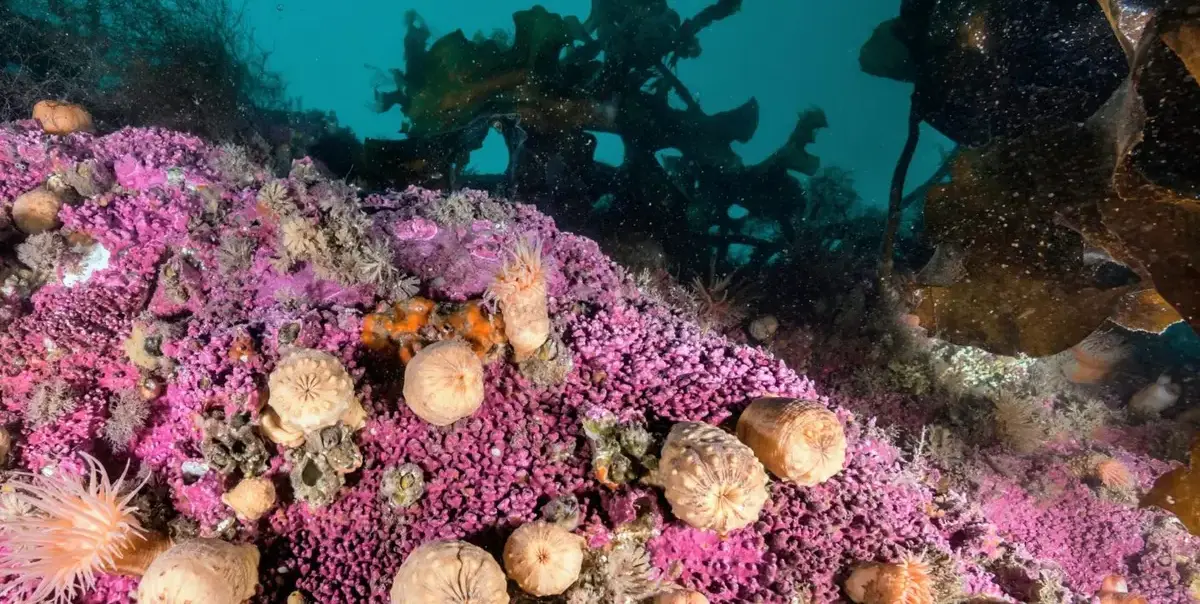Arctic seabed mining threatens fragile ecosystems
- December 10, 2024
- 0
The deep Arctic Ocean contains large reserves of oil and natural gas, as well as valuable rare earth elements and metals. These resources are becoming increasingly available as
The deep Arctic Ocean contains large reserves of oil and natural gas, as well as valuable rare earth elements and metals. These resources are becoming increasingly available as

The deep Arctic Ocean contains large reserves of oil and natural gas, as well as valuable rare earth elements and metals. These resources are becoming increasingly available as climate change accelerates the melting of ice. Arctic mining will offer significant economic opportunities but also present serious environmental risks. A study recently published in the journal Elementa highlights the urgent need to protect this fragile ecosystem as human activities in the region increase.
Deep Arctic and its untapped resources
According to estimates, the depths of the Arctic Ocean may contain 13% of the world’s undiscovered oil reserves and 30% of its natural gas reserves. The region also offers many rare earth elements and metals necessary for the construction of modern technologies. The potential economic benefits of these resources have attracted increasing political and commercial attention, further enhanced by the opening of new shipping routes and the rise of Arctic tourism.
Dr. from the Senckenberg Research Institute. “Climate change and melting sea ice make it increasingly easier to explore the Arctic Ocean, but they also bring major environmental risks,” warned Angelica Brandt.
Diverse and little-known habitats
The deep-sea habitats of the Arctic Ocean have a remarkable diversity of life forms, many of which are not fully understood. An international team of researchers analyzed 75,404 datasets covering 2,637 deep-sea species. The results highlight the need for more intensive research and international collaboration to fill existing gaps in knowledge.
Dr. “Although we have made significant progress in understanding the Arctic ecosystem through new technologies and infrastructures, there are still significant gaps in our knowledge of deep-sea communities living on the seafloor, as our new study clearly shows,” Brandt said. .
Features of the Arctic
The researchers examined data from freely accessible databases, non-digitized scientific literature, and information sources, focusing on samples taken north of 66 degrees latitude and at depths greater than 500 meters. Their analysis revealed the following results.
biodiversity
The phylum Arthropoda, which includes isopods and copepods, has the most individual records (21,405). Other common groups included annelids, sponges, and molluscs; the latter showed the greatest species richness.
Unique species deep in the Arctic Ocean
The brittle star Ophiocten gracilis was found at depths of more than 1,000 meters during the Polarstern expedition between the North Atlantic and the Arctic Ocean.
Geomorphological diversity
The Arctic has a variety of geological structures, including underwater canyons, continental slopes, seamounts, and biologically formed formations such as cold coral reefs.
“Not only have we comprehensively digitized important deep-sea data and published it in freely accessible databases, we have also collected, validated and comprehensively analyzed new deep-sea data. This shows that, contrary to popular belief, the Arctic Ocean actually has a very rich diversity of organisms.” “It allowed us to show that it is,” explained Dr. Hanye Saidi.
Data gaps deep in the Arctic
Despite these advances, significant knowledge gaps remain regarding benthic biodiversity, especially in the deep basins of the central Arctic. The study’s habitat maps identify regions with limited data by linking fauna groups to specific geomorphological areas.
Emphasizing the importance of cooperation, Dr. “Intergenerational collaboration within the UN Decade of Oceans and international collaboration with deep-sea experts and AWI were critical to this research,” said Saskia Brix.
Protecting the Arctic ecosystem from mining
The Arctic’s deep sea is far from the lifeless environment imagined by early explorers. However, it is of great importance to intensify international cooperation and actively monitor ecological parameters and faunal compositions.
“This is the only way we can better understand the structure and function of the Arctic ecosystem and ensure action is taken to protect this unique ecosystem that is so important to the northern hemisphere,” Dr Brix said. he said.
Dr. “Especially given the increasing economic and political interests, the lack of data on benthic biodiversity – especially in the deep basins of the Central Arctic Ocean – poses a significant challenge for sound management and conservation actions,” Saidi said.
Measures for mining and protection of the Arctic
The Arctic Ocean’s untapped resources offer undeniable economic opportunities, but the risks to its fragile ecosystem are enormous. As global interest in the region grows, it becomes increasingly critical to prioritize ecological protection through research, international cooperation, and sound conservation policies. Only by understanding the Arctic’s deep-sea biodiversity can humanity ensure that economic ambitions do not come at the expense of this vital and unique environment. The study was published in the journal elementa.
Source: Port Altele
As an experienced journalist and author, Mary has been reporting on the latest news and trends for over 5 years. With a passion for uncovering the stories behind the headlines, Mary has earned a reputation as a trusted voice in the world of journalism. Her writing style is insightful, engaging and thought-provoking, as she takes a deep dive into the most pressing issues of our time.